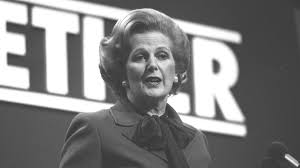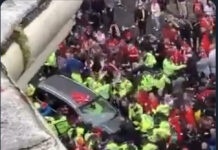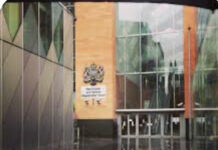Rising bills, falling support, and a bizarre, outdated design, mean that Council Tax is increasingly resembling the dreaded Poll Tax that it replaced, as poorer households spend an ever-greater share of their income paying it, according to new research published today
The report by the Resolution Foundation Think Tank finds that, compared to a generation ago, households across the poorer half of Britain get a greater share of their income from earnings – rising from 63 per cent in 1994-95 to 68 per cent in 2022-23.
The importance of earnings has increased fastest among lone parents, Londoners and Bangladeshi, Black, and Pakistani families .
This welcome rise reflects the fact that poorer households are more likely to be in work than they were in the mid-90s: the employment rate for people in these households increased by 9 percentage points between 1996-97 and 2022-23.
Rising employment has also helped to reduce the share of income poorer households get from social security benefits. Across the bottom fifth of the population, this has fallen from 59 per cent in 1994-95 to 46 per cent in 2010-11, and 33 per cent in 2022-23. More recently the retrenchment of welfare, which has seen the value of core benefits fall by 8 per cent in real terms since 2010-11, has accelerated the fall in benefits received by lower-income families.
Disability benefits have defied this trend however, with the average amount received by lower-income households quadrupling since the mid-1990s, from £220 to £1,070. This partly reflects the fact that the population has got older and sicker over this period, says the author.
When it comes to poorer households’ outgoings, one of the fastest growing areas has been Council Tax, which has seen the average bill rise by 77 per cent per cent in real terms between 1994-95 and 2020-21.
Rising Council Tax bills, and particularly falling support to help families pay for it, have meant that by the start of this decade (2020-21), the poorest fifth of households spent 4.8 per cent of their gross household income on the tax, up from 2.9 per cent in 2002-03. With basic bills rising by up to 5 per cent in England this coming year, or more in the case of six councils, this trend could intensify further.
The far slower growth of Income Tax spending among poor households – up from 4.7 to 5.9 per cent over the same period – means that they spend only £300 less (in current prices) on Council Tax than they do on Income Tax per year.
The Foundation adds that Council Tax is a hugely – and increasingly – regressive tax. The poorest fifth of households spend more than three times as much of their income on Council Tax as the richest fifth of families do (4.8 vs 1.5 per cent). In contrast, the richest fifth of households spend more than three times of their budgets on Income Tax as the poorest fifth (21.6 vs 5.9 per cent).
“The incomes of poor households haven’t risen enough in recent decades, as the UK economy has stagnated. But where their money comes from and what it is spent on has changed considerably.
“Two bursts of rapid jobs growth in the late 1990s and 2010s mean that earnings play an ever more important role in shaping lower income households’ living standards, while social security benefits contribute less.
“Council Tax is consuming a larger share of their poor families’ household budgets, who are spending almost as much on these bills as they pay in Income Tax. This terribly designed tax increasingly resembles the very thing it was meant to replace – the dreaded Poll Tax.”







